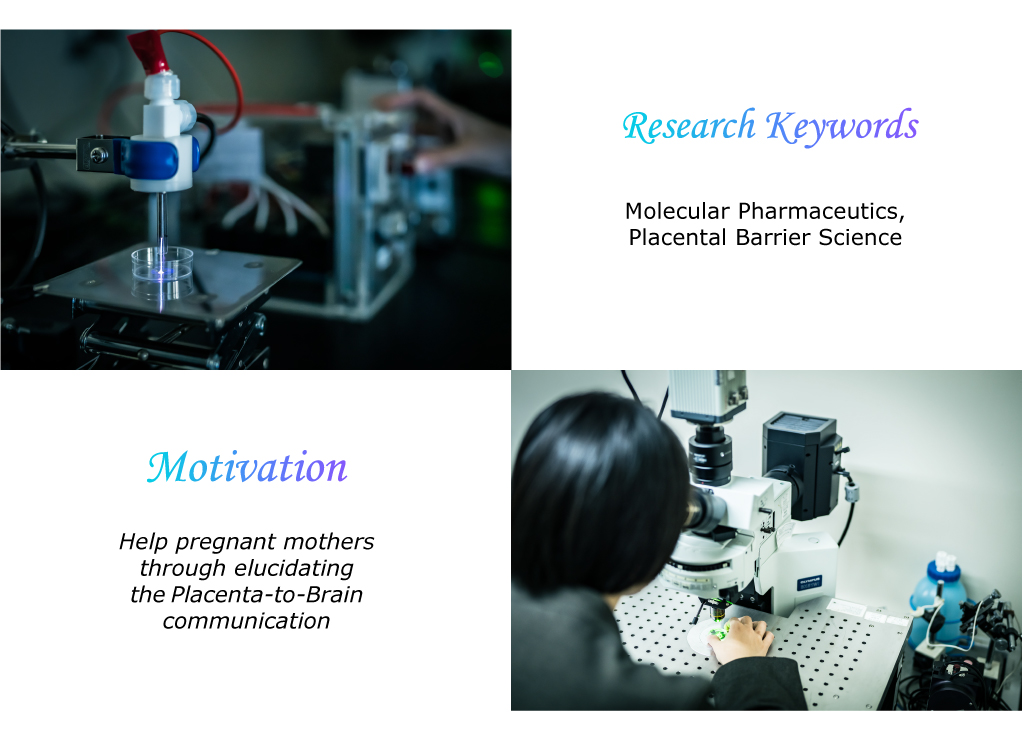

- Inagaki M, Tachikawa M, “Transport Characteristics of Placenta-Derived Extracellular Vesicles and Their Relevance to Placenta-to-Maternal Tissue Communication”, Chemical and Pharmaceutical Bulletin, 70(5), 324-329 (2022). DOI
- Inagaki M, Nishimura T, Nakanishi T, Shimada H, Noguchi S, Akanuma SI, Tachikawa M, Hosoya KI, Tamai I, Nakashima E, Tomi M, “Contribution of Prostaglandin Transporter OATP2A1/SLCO2A1 to Placenta-to-Maternal Hormone Signaling and Labor Induction”, iScience, 23(5), 101908 (2020). DOI
- Inagaki M, Nishimura T, Nakanishi T, Akanuma SI, Tachikawa M, Tamai I, Hosoya KI, Nakashima E, Tomi M, “Co-localization of microsomal prostaglandin E synthase-1 with cyclooxygenase-1 in layer II of murine placental syncytiotrophoblasts”, Placenta, 53, 76-82 (2017). DOI
To view a more comprehensive list of publications, please click on the "researchmap" link below.
Born in Aichi, Dr. Inagaki attended Keio University, and after graduating from the Faculty of Pharmacy in 2014, she went on to study at the Graduate School of Pharmaceutical Sciences at the same university. She obtained a doctorate and a pharmacist’s license in 2020. From April of the same year, she took up the post of Assistant Professor at Tokushima University Graduate School of Biomedical Sciences (Pharmaceutical Sciences). Based on the theme of improving women’s healthcare, which she has been focusing on since her undergraduate degree, Dr. Inagaki is incorporating the perspectives of neuroscience and fluid science to progress with research focusing on the placenta during pregnancy.
The Femtech technology that deals with the particular health issues of women has recently been garnering attention. In this field, Dr. Inagaki is focusing on the placenta, which is a pregnant woman-specific organ. The placenta secretes the message substances, e.g., nucleic acids and proteins, containing extracellular vesicles, and sends them to the maternal organs, which alters how a woman’s body functions during and post pregnancy. The goal of her research is to unveil the molecular mechanisms on the extracellular vesicles-mediated placenta-to-brain communication beyond the brain barriers, while incorporating interdisciplinary concepts of biopharmaceutics, obstetrics, fluid science, and neuroscience. This will shed new light on the further understanding of women’s mental health during and post pregnancy. The placenta-to-brain transport system of the extracellular vesicles at the brain barriers will also give us a hint on the efficient delivery of nucleic acid and protein drugs to the brain.

 Home
Home




